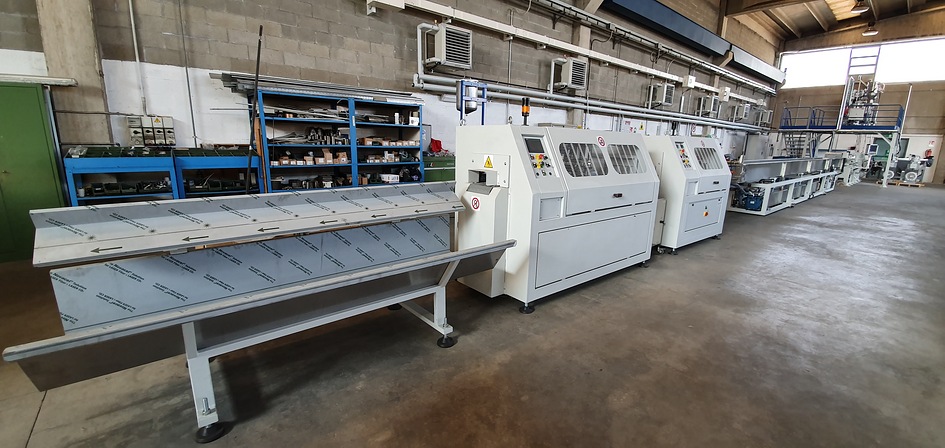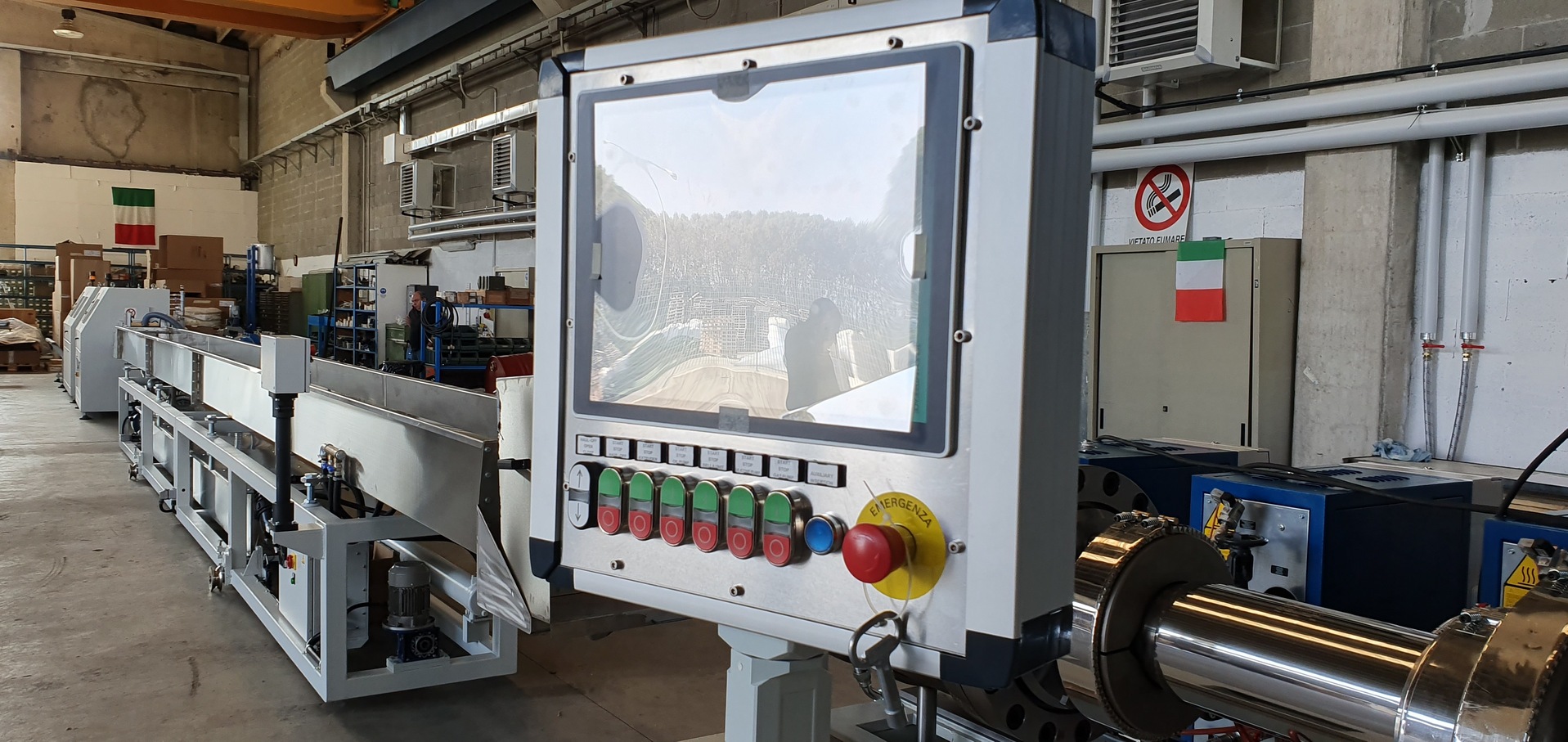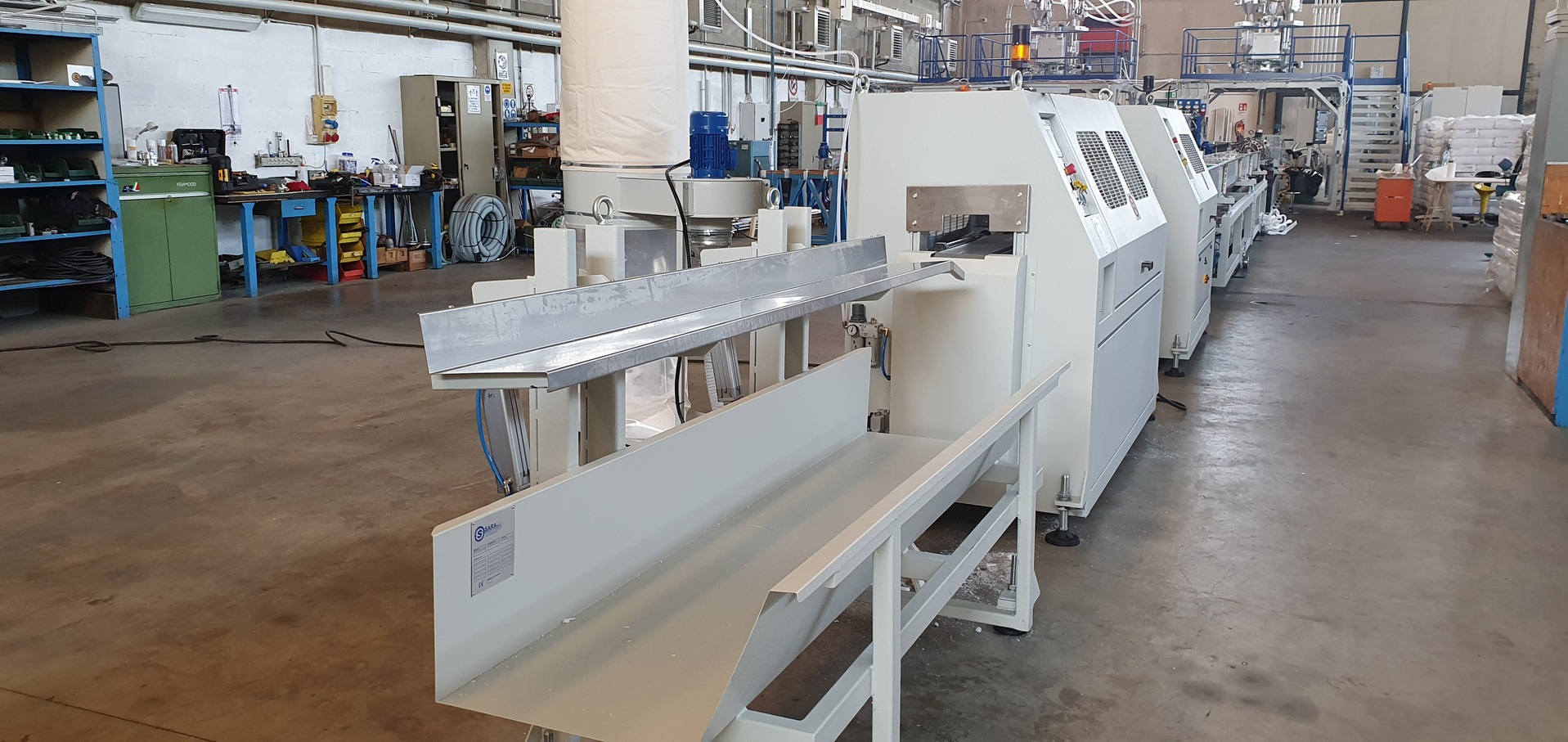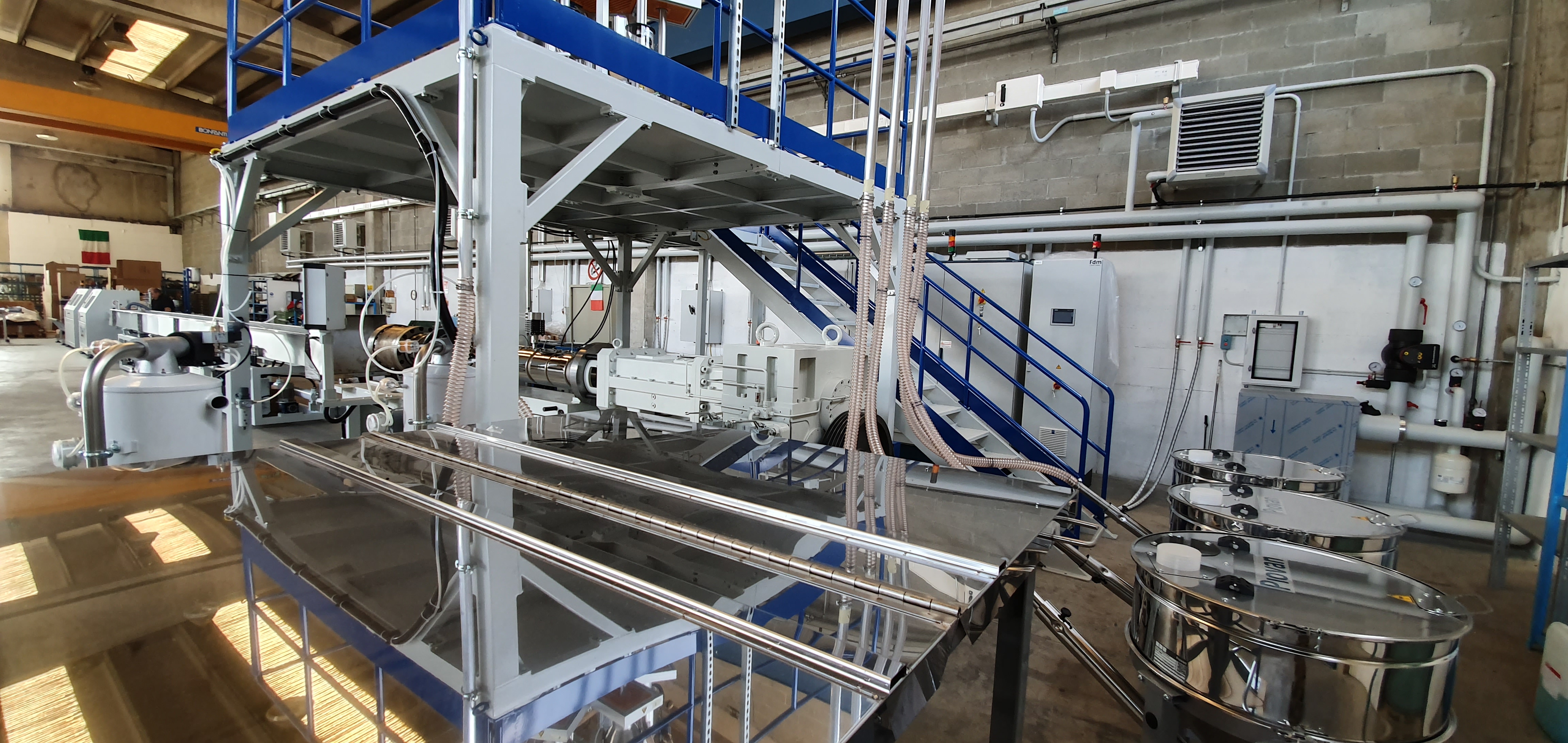
The basic principle of twin-screw extruders for thermoplastic was conceived in Italy in the late thirties by Roberto Colombo of LMP (Lavorazione Materie Plastiche, Torino, Italy) while he was working with Carlo Pasquetti, also of Torino, on the problem of mixing cellulose acetate without the use of solvent.

Colombo developed a system of intermeshing corotating screws, which proved effective for the purpose; the result was, in fact, not only a mixer but also an extruder.

Already, in 1939, a group of these machines were sold to the German I. G. Farbenindustrie for extrusion.

Colombo’s first patent on corotating twin-screw extruders was obtained in Italy (I.pat 370578) on February 6, 1939. Later on August 7, 1947, after the interval caused by the war, this principle was patented by him in the United States (U.S. patent 2536396), then in Canada (CA. patent 517911) England (GB. patent 629109), and in other countries.

This new concept was found immediately so interesting that various companies acquired the rights to use these patents. There were many companies that manufactured these machines under the LMP/Colombo licence, for the length of the basic patent validity.

The principles & technologies of Roberto Colombo are taught in polymer science and engineering courses throughout the world.